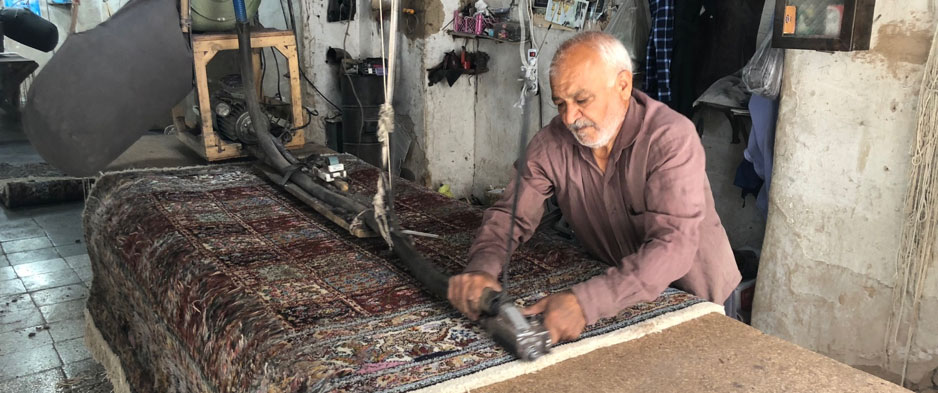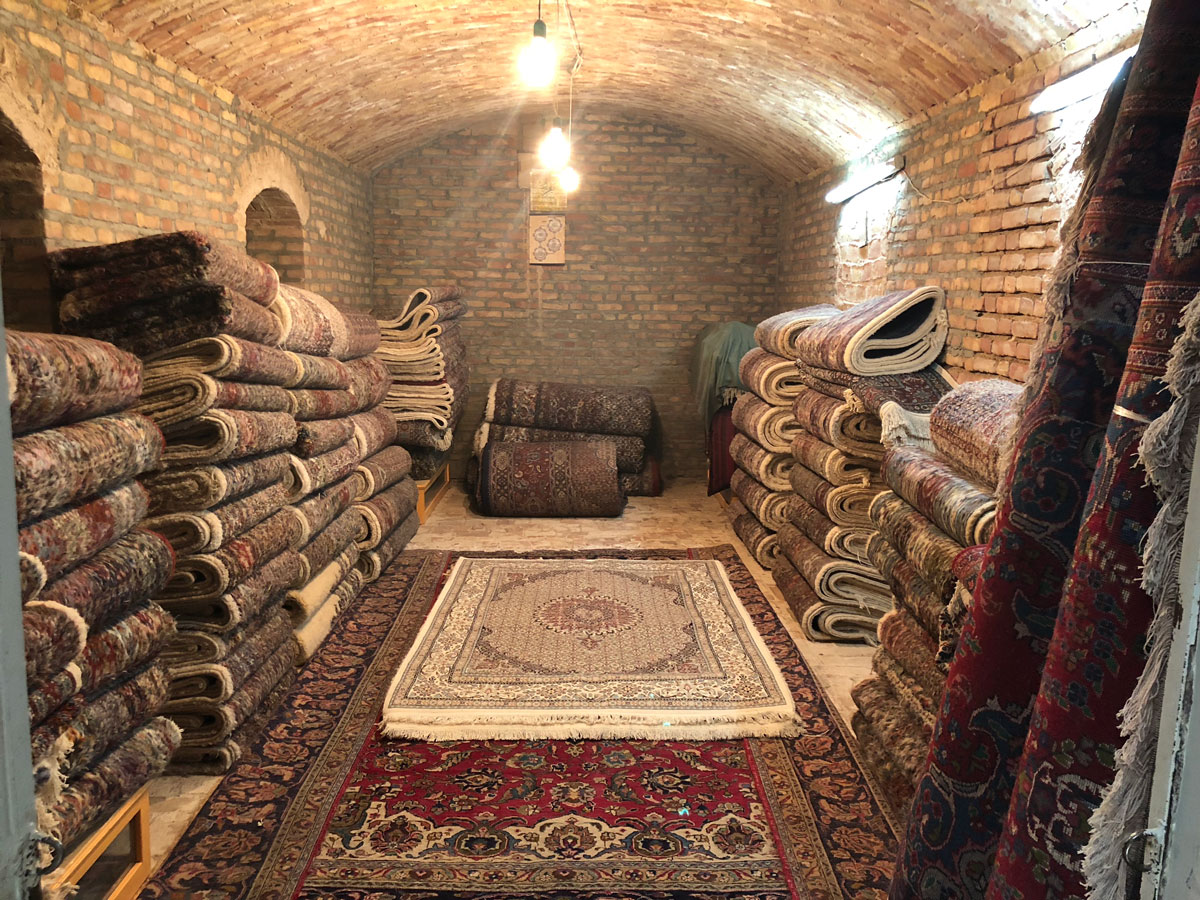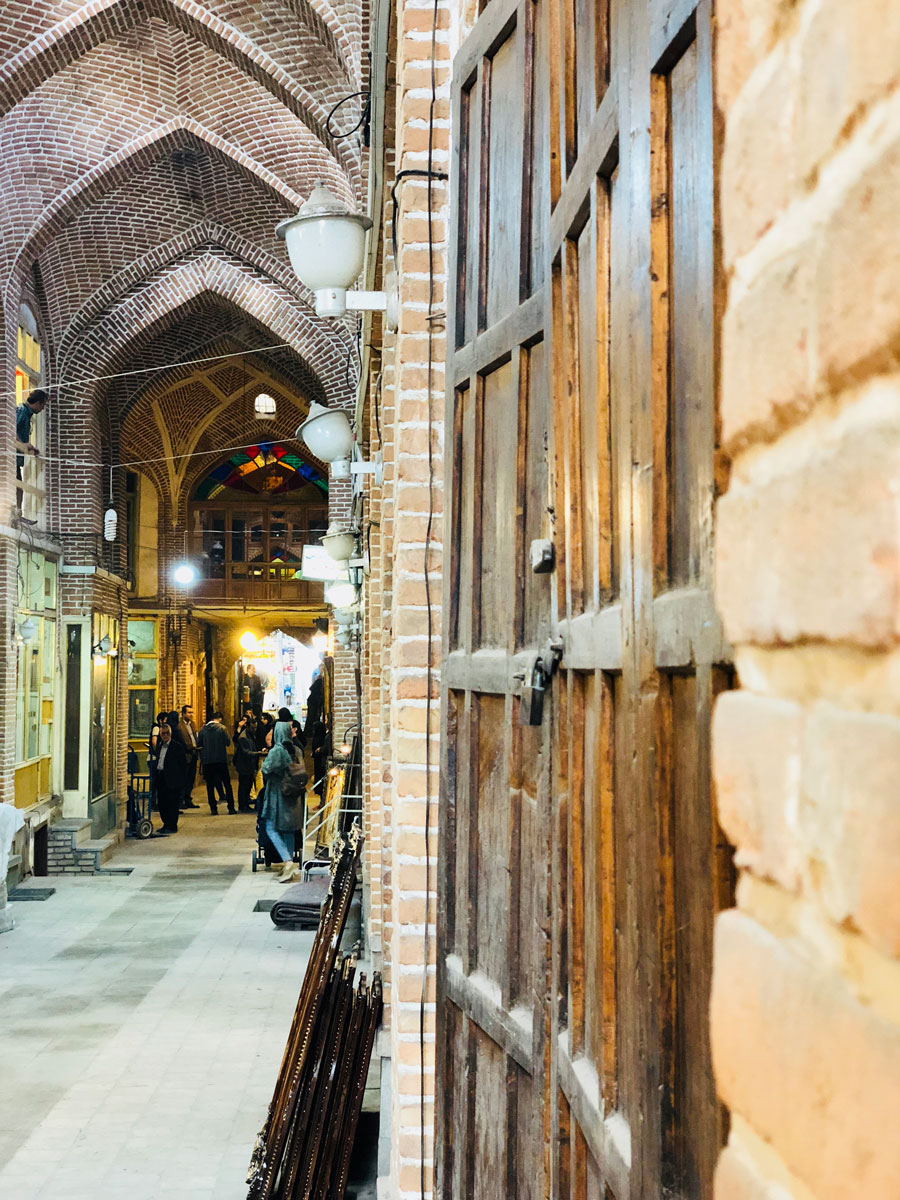Finalisation
After the rug has been separated from the loom, further crucial processing steps are necessary to obtain the final product. Contrary to what one would expect, the pattern of the freshly knotted carpet is still hardly recognisable. The next step in production reveals the artwork of months of knotting.
Trimming or polishing the pile
In this step the excess wool of the pile is shaved off and brought to an even height. This is done by hand. Nowadays the pile can be trimmed much faster and more precisely with the right tools. The trimmer is repeatedly moved over the same area until the desired pile height is reached.
The pile of a Moud rug is trimmed - on the bottom left side you can still see the untreated area
In this video the pile of a Nain rug is polished. Provided by Nain Trading.
Washing
The rugs are washed after polishing to remove wool, dust and pigment residues. This is normally done without the addition of chemicals or high doses of surfactants as these can attack the natural wool grease. Nevertheless, it is highly important and requires a lot of expertise. Too much water or too much heat would destroy months if not years of hard work.Drying
After its washing, the rug is thoroughly and professionally dried. This ensures that colour pigments stabilise, the shape is retained and no unpleasant odours are produced. If drying incorrectly, the rug loses its symmetrical shape, shine and color intensity.
Dry storage space in the finishing of rugs.

Rug bazaar in Tabriz, Iran
Today, many oriental carpets are transported by truck to Europe or Germany. One of the largest transhipment points for oriental carpets in the western world is Hamburg. Already more than a hundred years ago the rugs were stored here by numerous traders in the Speicherstadt and sold mainly to retailers and then shipped further on. Thus, a multi-faceted network of wholesalers was formed, of which only a part survived today after the hype of Oriental rugs flattened. Nain Trading is a dealer in the Speicherstadt who made the leap of the rug trade into the digital world early. Today, this retailer offers over 25,000 different unique pieces, which the company can offer online at particularly competitive prices thanks to its location at the pulse of wholesalers. Such an extensive assortment would have been unthinkable only 5-10 years ago.
Production in Detail
Production of Oriental Rugs
Centuries-old tradition is the basis of almost every Oriental rug. Long ago Persian rugs were already considered the highest luxury...
Read more
Centuries-old tradition is the basis of almost every Oriental rug. Long ago Persian rugs were already considered the highest luxury...
Read more
Material
Whether sheep wool, silk or cotton, the material of a hand-knotted oriental rug usually comes from nature...
Read more
Whether sheep wool, silk or cotton, the material of a hand-knotted oriental rug usually comes from nature...
Read more
Colours and Dyeing
The colours of many high-quality oriental carpets still originate today from plants and minerals...
Read more
The colours of many high-quality oriental carpets still originate today from plants and minerals...
Read more
Design
No matter how detailed the pattern may be, some knotters still craft the rug from memory today...
Read more
No matter how detailed the pattern may be, some knotters still craft the rug from memory today...
Read more
Knotting
An art that has been perfected over many centuries and is still unrivalled today...
Read more
An art that has been perfected over many centuries and is still unrivalled today...
Read more
Comparison to machine-made Rugs
Colour facets, durability, level of detail are only a few of the differences to machine-made rugs...
Read more
Colour facets, durability, level of detail are only a few of the differences to machine-made rugs...
Read more